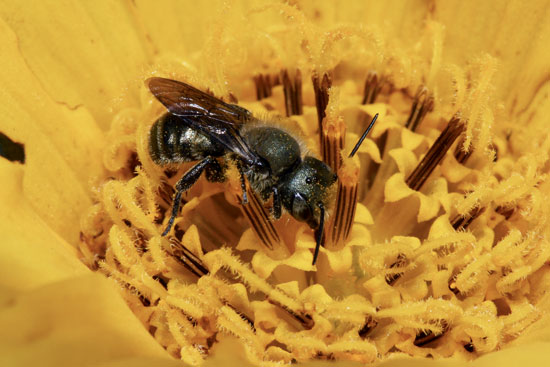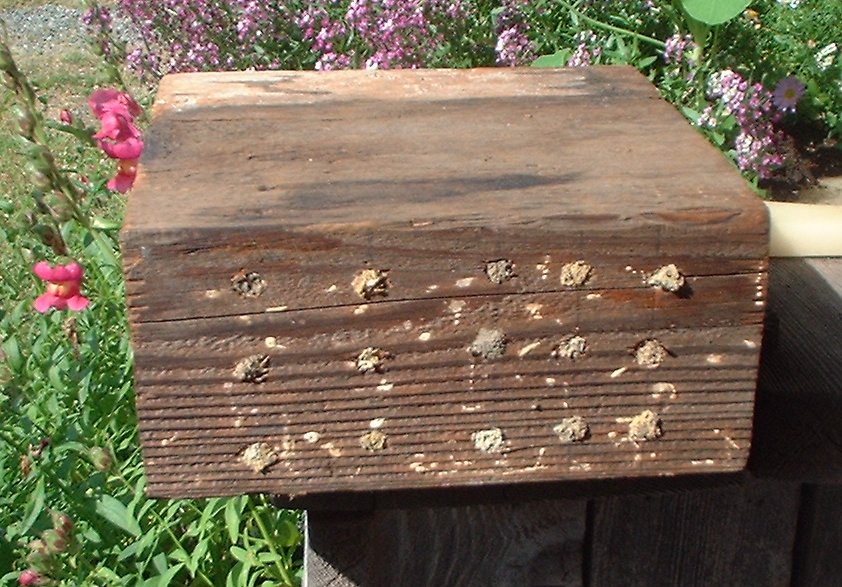Shorter days, cooler nights, bronzing prairie grasses and asters in bloom – all herald the arrival of fall on the prairie. However, as this year’s abundant growth recedes, our garden’s care and keeping into the fall and winter will affect both plants and pollinators in next year’s garden.
Mason Bees
One of our most desirable spring pollinators is the Mason Bee; and our prairie gardens provide great habitat for this species. You can begin planning now to attract this special native bee species.

Photo By Rollin Coville (https://www.motherearthnews.com/nature-and-environment/wildlife/types-of-bees-osmia-mason-ze0z1311zcov)
Mason bees are solitary nesters. They are incredibly efficient pollinators (one Mason bee can do the work of 60 honey bees), and they are docile. In March, adult females emerge, mate, lay eggs for 4-6 weeks, and then die.
Eggs are laid in a series of small chambers the females build within tunnels of dead wood or hollow plant stems in a protected spot. Each egg is provisioned with pollen and then plugged with mud, hence the name “mason.” Eggs develop for the remainder of the year. Allowing stems and dead woody plant materials to remain in our gardens in fall and winter preserves developing Mason bee larvae that may be present.
Create a Nesting Box
Because a number of our North American native bees, including Mason bees, are in decline, native gardeners can further encourage Mason bees by adding nesting bee boxes. Bee boxes are simply made, whether from wood, bamboo or cardboard.

By Red58bill – Own work, CC BY 3.0, https://commons.wikimedia.org/w/index.php?curid=6022789
As you plan for spring, you might include a bee box-making day as a winter project. Install your bee box in a dry, warm, protected spot early next spring, make sure there are a number of nearby sources of pollen and mud, and you are welcoming one of our most interesting native bees, the Mason bee, into your spring prairie garden!
Citations:
- https://blog.nwf.org/2019/06/buzzworthy-mason-bee-condos/
- https://www.buzzaboutbees.net/mason-bees.html
- http://www.newsofmillcreek.com/content/whats-all-buzz-about-mason-bees-whistling-gardener
Further information on Mason beekeeping:
- https://thehoneybeeconservancy.org/why-bees/mason-bees/
- https://www.natureserve.org/sites/default/files/web_-_natureserve_osmia_report_brochure.pdf
- https://www.usgs.gov/news/buzz-native-bees
